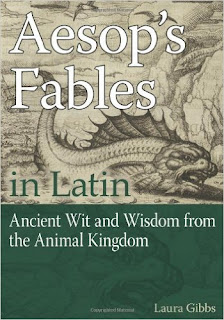Aesop (week twelve)
 Aesop was an Ancient Greek fabulist or story teller credited with a number of fables now collectively known as Aesop's Fables. Many of the tales are characterized by animals and inanimate objects that speak, solve problems, and generally have human characteristics.
Aesop was an Ancient Greek fabulist or story teller credited with a number of fables now collectively known as Aesop's Fables. Many of the tales are characterized by animals and inanimate objects that speak, solve problems, and generally have human characteristics.
Scattered details of Aesop's life can be found in ancient sources, including Aristotle, Herodotus, and Plutarch.Depictions of Aesop in popular culture over the last 2500 years have included many works of art and his appearance as a character in numerous books, films, plays, and television programs.
Art and literature:
Ancient sources mention two statues of Aesop, one by Aristodemus and another by Lysippus.
 Early on, the representation of Aesop as an ugly slave emerged. The later tradition which makes Aesop a black African resulted in depictions ranging from 17th-century engravings to a television portrayal by a black comedian. In general, beginning in the 20th century, plays have shown Aesop as a slave, but not ugly, while movies and television shows (such as The Bullwinkle Show) have depicted him as neither ugly nor a slave.
Early on, the representation of Aesop as an ugly slave emerged. The later tradition which makes Aesop a black African resulted in depictions ranging from 17th-century engravings to a television portrayal by a black comedian. In general, beginning in the 20th century, plays have shown Aesop as a slave, but not ugly, while movies and television shows (such as The Bullwinkle Show) have depicted him as neither ugly nor a slave.
Later in the 19th century the subject of Aesop telling his tales was made popular by the painting of him entertaining the maids of Xanthus by Roberto Fontana (1844-1907).A depiction of the fabulist surrounded by laughing young women, it went on to win a prize at the Milanese Brera Academy in 1876 and was then shown at the 1878 International Exhibition and the 11th exhibition of the Società di Belle Arti di Trieste in 1879. A later painting by Julian Russell Story widens Aesop's audience by showing people of both sexes and all ages enjoying his narration.Though Aesop is pictured as ugly in both, his winning personality is suggested by his smiling face and lively gestures.
Portrait of Aesop by Velázquez in the Prado:
Early Aesop's fables picture book in 15century :
Nowadays Aesop's fables picture book:
Moral of the fables: http://www.taleswithmorals.com/
Fables: http://140.126.22.95/wbcmsc/cmain1.asp
Myth & Metaphor : http://140.126.22.95/wbcmsc/cmain1.asp
video: The Crow and the Fox (https://www.youtube.com/watch?v=vt3HP4VWuH0)




沒有留言:
張貼留言